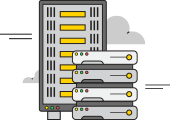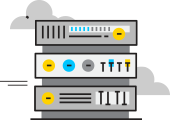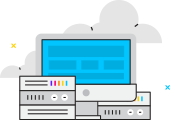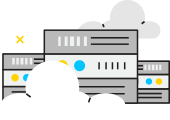Customer Data Hub is a centralized platform designed to collect, manage, and analyze vast amounts of customer-related information from various sources. It serves as a unified repository for organizing data from different touchpoints, allowing businesses to gain valuable insights and make data-driven decisions to enhance their customer experience. In this article, we will explore the history, features, types, uses, and future perspectives of Customer Data Hub, particularly in conjunction with proxy server services offered by OneProxy.
The History of Customer Data Hub and Its First Mention
The concept of Customer Data Hub emerged as companies realized the need to consolidate their customer data from disparate systems and channels. The first mention of a Customer Data Hub can be traced back to the early 2000s when the proliferation of e-commerce and digital marketing started generating substantial amounts of customer data. Businesses recognized that harnessing this data efficiently could significantly impact their competitiveness and overall performance.
Detailed Information about Customer Data Hub
A Customer Data Hub is a sophisticated system that employs advanced technologies such as big data processing, machine learning, and artificial intelligence to manage and analyze vast datasets. It acts as a data integration and enrichment layer, aggregating customer information from sources like websites, mobile apps, CRM systems, social media, and offline interactions. The hub standardizes, cleanses, and organizes the data, making it readily accessible for analysis.
The Internal Structure of the Customer Data Hub and How It Works
The Customer Data Hub is built upon a robust architecture that enables seamless data flow and real-time processing. The typical components of a Customer Data Hub include:
-
Data Ingestion: The hub ingests data from various sources, such as APIs, webhooks, databases, and files, utilizing secure authentication methods.
-
Data Storage: Customer data is stored in a scalable and secure database, ensuring high availability and data integrity.
-
Data Transformation: The hub normalizes and enriches the data by resolving inconsistencies, eliminating duplicates, and appending additional information.
-
Data Analysis: Advanced analytics and machine learning algorithms are applied to the data to gain valuable customer insights, behavior patterns, and trends.
-
Data Activation: The enriched data is made accessible to other marketing and analytical tools, enabling personalized marketing campaigns and customer segmentation.
Analysis of the Key Features of Customer Data Hub
The success of a Customer Data Hub lies in its key features that cater to the demands of modern businesses. Some crucial features include:
-
Data Integration: Seamlessly aggregating data from multiple sources, ensuring a holistic view of the customer journey.
-
360-Degree Customer View: Creating a comprehensive profile of each customer, including their interactions, preferences, and purchase history.
-
Real-time Data Processing: Enabling businesses to respond promptly to customer actions and deliver personalized experiences in real-time.
-
Scalability and Performance: Handling large volumes of data efficiently to accommodate business growth and maintain optimum performance.
-
Data Privacy and Security: Implementing robust security measures to safeguard sensitive customer information and comply with data regulations.
Types of Customer Data Hub
There are different types of Customer Data Hubs based on their scope and functionalities. Below is a classification of these types:
| Type of Customer Data Hub | Description |
|---|---|
| On-Premises Data Hub | Installed and managed within an organization’s infrastructure, offering complete control over data management. |
| Cloud-Based Data Hub | Hosted in the cloud, providing flexibility, scalability, and reduced maintenance overheads. |
| Enterprise Customer Data Hub | Serves large organizations with complex data ecosystems, facilitating cross-departmental data sharing. |
| SMB Customer Data Hub | Tailored for small and medium-sized businesses, providing essential data management capabilities. |
Ways to Use Customer Data Hub, Problems, and Solutions
A Customer Data Hub serves various purposes across industries:
-
Personalization: Delivering personalized content, product recommendations, and marketing messages to customers.
-
Segmentation: Grouping customers based on common attributes, behaviors, or preferences to target specific audiences.
-
Marketing Automation: Automating marketing activities based on customer behavior and engagement levels.
-
Customer Journey Mapping: Understanding the customer journey and identifying pain points for better experiences.
Despite the numerous benefits, implementing and maintaining a Customer Data Hub can present challenges, such as:
-
Data Silos: Difficulties in consolidating data from different sources, leading to fragmented customer views.
-
Data Quality Issues: Inaccurate, incomplete, or inconsistent data affecting decision-making processes.
-
Data Privacy Concerns: Ensuring compliance with data protection regulations and securing sensitive information.
To address these challenges, businesses can adopt data governance practices, invest in data quality tools, and prioritize data privacy measures.
Main Characteristics and Comparisons with Similar Terms
| Term | Description |
|---|---|
| Customer Data Platform (CDP) | Often confused with Customer Data Hub, a CDP focuses on building a unified customer profile. |
| Data Warehouse | Primarily used for business intelligence and reporting, storing historical data for analysis. |
| Data Lake | A vast storage repository that retains raw and unstructured data for various types of analysis. |
While CDPs, data warehouses, and data lakes have their uses, a Customer Data Hub stands out for its real-time data processing, scalability, and ability to handle diverse data sources efficiently.
Perspectives and Technologies of the Future
The future of Customer Data Hubs is exciting, with emerging technologies contributing to its evolution. Some notable trends include:
-
AI-Driven Insights: Advanced AI algorithms will empower businesses with deeper customer insights and predictive analytics.
-
Blockchain for Data Security: Blockchain technology may enhance data security, transparency, and customer consent management.
-
IoT Integration: The integration of IoT data into Customer Data Hubs will offer new avenues for understanding customer behavior.
How Proxy Servers Can Be Used with Customer Data Hub
Proxy servers, such as those provided by OneProxy, can play a significant role in conjunction with Customer Data Hub:
-
Data Collection: Proxies allow businesses to collect data from various geolocations without revealing their actual IP addresses.
-
Anonymity: Proxies ensure anonymity while accessing online resources, protecting users’ identities and sensitive information.
-
Bypassing Restrictions: Proxies enable accessing data and online services that might be restricted in certain regions.
Related Links
For more information about Customer Data Hub, you can refer to the following resources:
- Customer Data Platforms vs. Customer Data Hubs: What’s the Difference?
- The Role of AI in Modern Customer Data Hubs
- Data Privacy Regulations and Implications for Customer Data Hubs
In conclusion, Customer Data Hub is a powerful tool that empowers businesses to harness the potential of their customer data effectively. By centralizing, analyzing, and acting upon customer insights, companies can deliver personalized experiences, improve customer loyalty, and drive sustainable growth. With continuous advancements in technology and data management practices, the future of Customer Data Hubs looks promising, paving the way for a more customer-centric business landscape.




